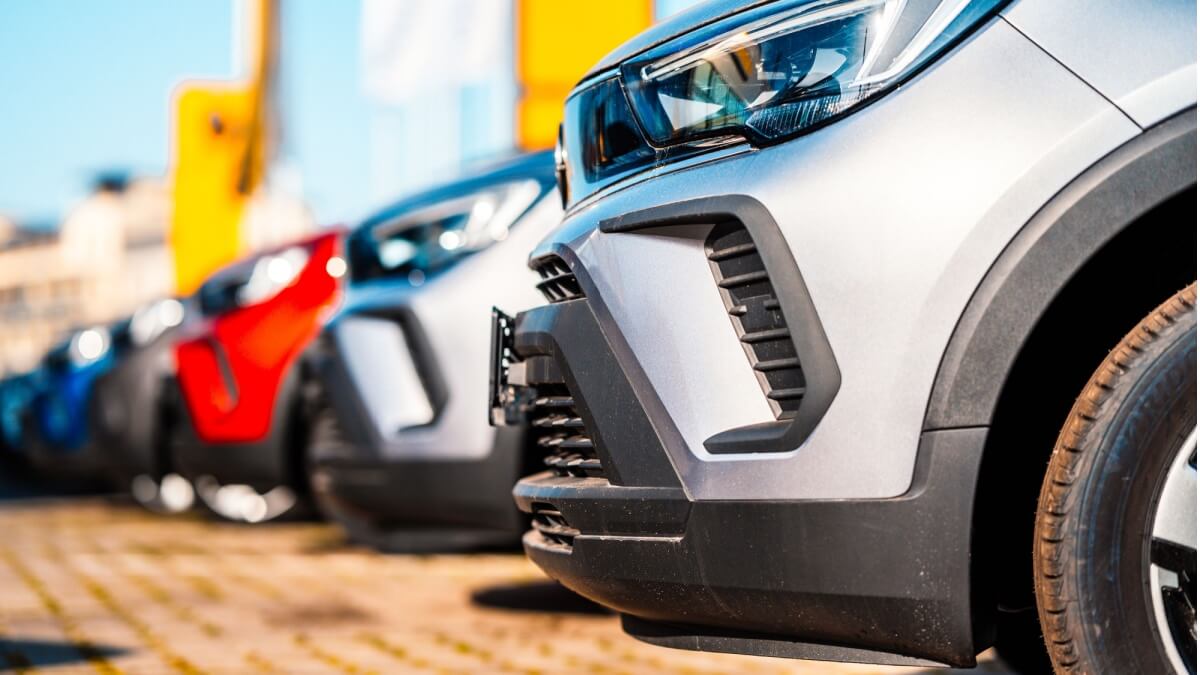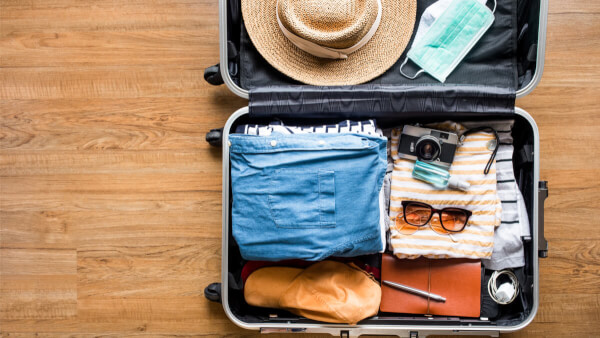Luxury solo travel: your guide to high-end solo adventures
Explore the best luxury solo travel experiences with our ultimate guide.

Getting a car for your trip in Europe may be a natural choice, offering comfort and flexibility, and an easy way to design your own itinerary. This guide walks through some important things to consider if you’re thinking of driving in Europe, to make sure your trip goes to plan.
US residents and citizens can rent a car in Europe, as long as they have the required license or licenses, and meet the requirements of the specific car rental company.
The exact licensing requirements can vary from one European country to another - in some cases a US license is enough, but it’s common to need an international driving permit (IDP) in addition¹.
It’s also worth noting that on top of any legal requirement in the country you’re heading to, the hire company you choose could have their own rules. Some companies need an IDP even when it’s not mandatory by law, and companies like Enterprise®² may also have rules about the age you must be to hire, based on location and the vehicle class, for example.
An international driving license or IDP is a pretty good idea for your European road trip. It’s not always strictly necessary as countries in Europe can set their own rules about what’s needed - but some hire companies ask to see an IDP even if the law doesn’t require it.
On a national level, some countries accept a US license no problem. Some need an IDP in addition to your normal license, with no flexibility.
Others can accept a US license - but only if it is accompanied by an official translation. An IDP can be used as this official translation, making the whole process of navigating international driving laws that bit simpler.
Getting an IDP costs 20 USD and can be done before you leave, so you’ll have the flexibility you need for your trip³, no matter where you’re heading or what the hire company usually asks for.
In most countries, third party insurance is mandatory, but these requirements can vary based on where you’re going. In any case, it’s not worth risking being underinsured.
Your car rental firm is likely to offer a selection of different packages to top up your mandatory insurance to reduce excess fees and increase the support you’d get if you run into an accident. Consider topping up for peace of mind.
So, is hiring a vehicle for your trip to Europre the best idea? Let’s take a look at some of the pros and cons you might want to consider before you hand over your cash to get your car.
Having your own wheels gives you flexibility about your itinerary
There are some fantastic driving itineraries in Europe, including some which cover areas inaccessible by public transport
Depending on where you’re headed, hire costs can be quite reasonable
Many car hire companies operate in Europe, with services including vehicles you can hire and return in different locations easily - ideal for a one way trip flying in and out of different airports
You’ll need to check the local licensing requirements and get familiar with driving laws and norms wherever you’ll be
Some European countries drive on the left, and manual cars are common, which may be unfamiliar
Costs for hire can vary a lot, and you’ll also likely want to pay extra to top up your insurance cover
In some countries and cities, routes may be crowded or difficult to navigate, particularly at peak times
The costs of renting a car in Europe can vary a lot, depending on where you’re heading, the type of vehicle and the driver’s age. Generally a smaller car, and having a single driver aged 25 or older, means the lowest fees.
You might find you pay extra for a one way hire, where you collect in one location and return to a different one, but some companies waive this additional charge as long as you’re not moving from one country to another during the time.
To give a quick feel, at the time of writing, hiring a small car from a Paris airport for a week during June 2024 would cost from around 450 USD, while the same hire from a London airport could be somewhat cheaper, starting from about 250 USD.
A European road trip can be a great adventure whenever and wherever you’re thinking of going. Here are some tips and ideas to help make sure you find the right vehicle, at the right price, and have a smooth experience during your trip.
There are lots of big name vehicle rental companies in Europe, many of which operate throughout the continent. There are also lots of local or regional options. Which is best for you might depend on where you’re headed, the type of vehicle you need, and how long you’ll be traveling for.
If you’re looking to hire on arrival in Europe a good starting point is simply to look at the major rental companies represented at the airport you’re flying into. Major airports have many different options, which compete on price and flexibility, so you might find what you need right away.
When you pick up your new rental vehicle, the driver must be present with their valid license and - if required by the provider or the specific country - international driving permit. Many rental companies also need a credit card to act as a guarantee.
Here are a few common sense tips when picking up your car, so make sure the process goes smoothly:
|
|---|
Your experience of driving in Europe will be dictated by where exactly you’re heading, and to an extent, the car or vehicle type you choose.
As you might expect, driving in major cities can mean running into congestion, and finding parking may be tricky or expensive. Some major European cities charge fees to enter in a car, or restrict entry entirely to some vehicle classes.
On the upside, you shouldn’t run into any problems with navigating in or between major cities. Most of Europe is covered by extensive highway networks, and directional signs are good.
Plus, cell phone coverage is excellent, and services like Google Maps® are up to date, well used, and reliable.
If you’re headed off the beaten track you may have a somewhat different experience. While much of Europe has good roads, you may find much narrower tracks in rural areas - and being in the countryside is no guarantee they’ll be quiet.
In some areas, during busy tourist times, country roads can become busy - and even without tourists, you may encounter agricultural equipment or other hazards.
Being aware of your surroundings is crucial as always - digital mapping services aren’t always as reliable as you may hope, so use common sense and ask for help if you’re unsure about where you’re heading.
Once you’re used to driving in more rural areas in Europe you’re in for a rewarding trip - you’ll have flexibility and freedom, and some of the routes available are absolutely unbeatable.
When you return your car it’ll be subject to a vehicle conditions check before you’re issued a final invoice and passed back any deposit you’ve paid.
Be sure to drop off your vehicle at the time you’ve arranged, as there may be extra fees for a late return.
| Here are a few pointers to remember: |
|---|
|

As a financially-savvy individual, you know you have limited options for setting up a US bank account as a non-resident.
With that in mind, why not consider something different?
The Wise account helps you manage your money wherever you are. You can get a US routing number and account number, and anyone can use these to pay you — just like a local.
If you travel or do business internationally, you’ll know how important it is to convert money at a reasonable exchange rate.
With the Wise account you convert at the mid-market exchange rate, the same one you find on Google, this way you know how much it will cost you, with no hidden fees* or surprises in the end.
Before you get behind the wheel, make sure you’re familiar with how your vehicle is operated, specific local laws and road rules, and what happens if there’s a problem. Here are a few pointers to start you off.
The road rules may vary based on where you’re heading, so reading up on the local laws is essential. Here are a few common things to watch out for:
|
|---|
Learn the local emergency number wherever you’re heading so you know what to do if you have an accident and need police or medical help. In most EU states you’ll need to call 112, but this is not the same throughout Europe - it’s 999 in the UK for example.
You’re likely to find emergency phones along major roads at regular intervals, which can be used if you don’t have cell phone coverage.
For a minor accident, you’ll need to exchange information with any other drivers at the very least. In some countries it’s mandatory to call the police, even for small issues.
However, in other countries you should only call the police in the case of personal injury. Check the details wherever you’re heading - your hire company can help - as there may be a call out cost if you call police and they’re not needed.
You’ll also need to check your car hire contract to see if you have to contact either your insurer or the hire service if you have a minor accident.
If you break road rules and get stopped by police while you’re driving you’ll need to cooperate fully, and take their advice on what happens next. This will depend on the nature of the incident.
If you’re issued a speeding ticket or similar when you’re overseas, it will usually wind up being passed to the car hire company. They’ll pass it on to you to pay - and can also add their own admin fees to the fine as well.
In the UK, you’ll need to be familiar with driving on the left - although this isn’t the case in mainland Europe.
If you’ve not driven on the left before you’ll want to take some time on quiet roads to get used to it. As you’ll have a right-hand-drive vehicle, all controls will be reversed. While this feels odd at first, you can get used to it surprisingly quickly.
Take things slow to start off with, and make sure you’ve got to grips with priorities which may also have changed compared to your experience.
There’s no best time to drive in Europe. Bear in mind that some destinations may be tricky to navigate in winter, particularly if there’s heavy snow or high winds.
On the other hand, very popular routes can get busy during the summer when tourists are out, and schools are on vacation. If you have complete flexibility you might want to consider a quiet ‘shoulder season’ trip, in spring or fall to get the best of both worlds.
There are lots of very good itineraries for European road trips. If you’re retracing your Irish routes you may like the Wild Atlantic Way⁴ which covers 2,500 kilometers in Ireland, and can be split up into convenient smaller sections on shorter trips. Or if you’re looking for some sun, consider some of the routes promoted by the Spanish tourism authorities, including driving in Aragon⁵ to take in the scenery, culture and history there at your own pace.
There’s a road trip for everyone in Europe, whether it’s exploring the highlands and islands of Scotland with an RV, or zipping around Paris and the surroundings in a city car. Use this guide to driving in Europe as an American to get a bit of inspiration, and enjoy planning your perfect trip.
Sources:
Sources checked on 06.19.2024
*Please see terms of use and product availability for your region or visit Wise fees and pricing for the most up to date pricing and fee information.
This publication is provided for general information purposes and does not constitute legal, tax or other professional advice from Wise Payments Limited or its subsidiaries and its affiliates, and it is not intended as a substitute for obtaining advice from a financial advisor or any other professional.
We make no representations, warranties or guarantees, whether expressed or implied, that the content in the publication is accurate, complete or up to date.

Explore the best luxury solo travel experiences with our ultimate guide.

Explore the best luxury travel destinations and tips for singles over 50.

Explore the costs of chartering a yacht, including factors that influence prices, types of charters, and additional expenses.

Understand what Worldpackers is, how it works and whether it's a safe platform.

Everything you need to know about international summer camps.

Understand the ins and outs of using SIM cards for international travel. Learn about the need, process, usage, and the best options available in the market.